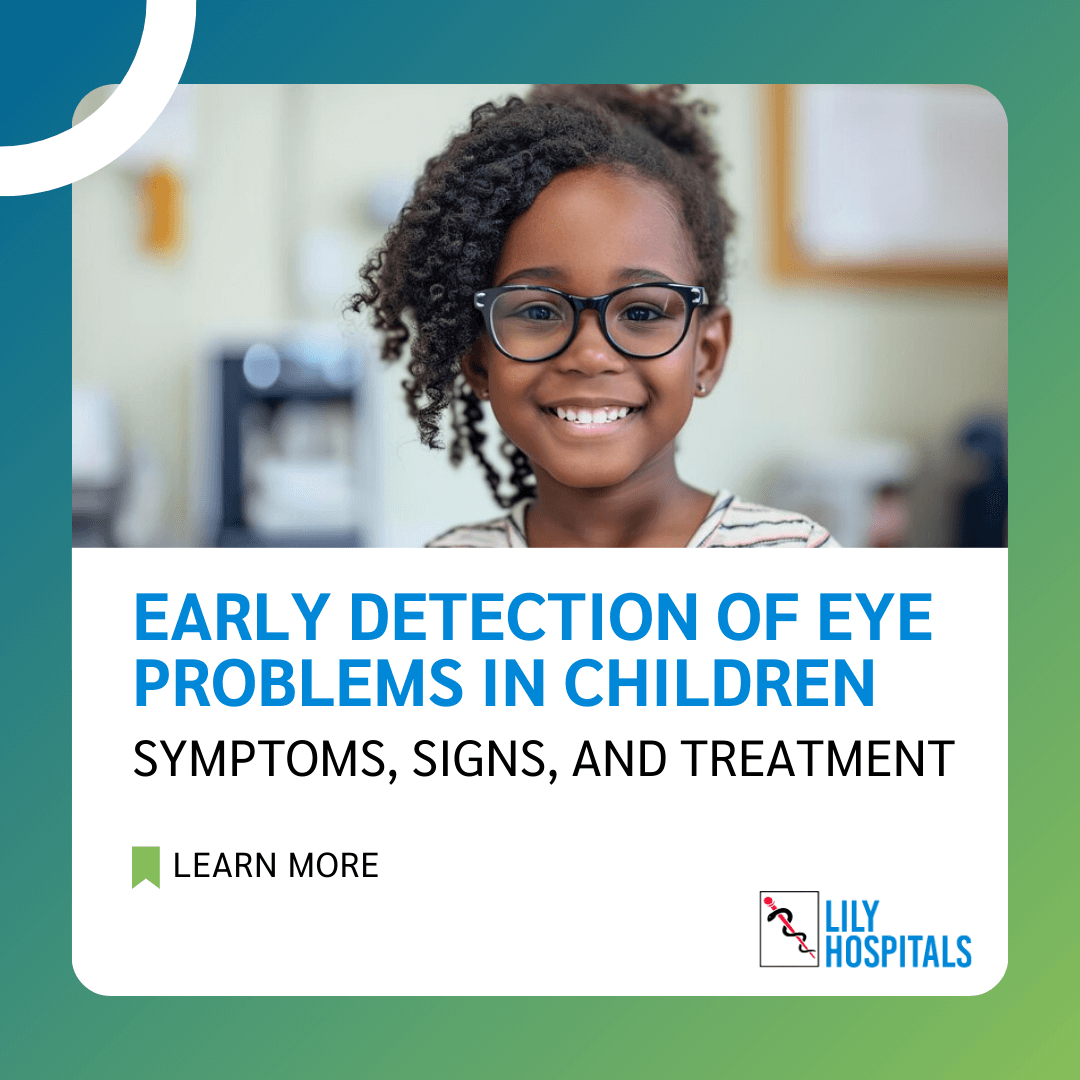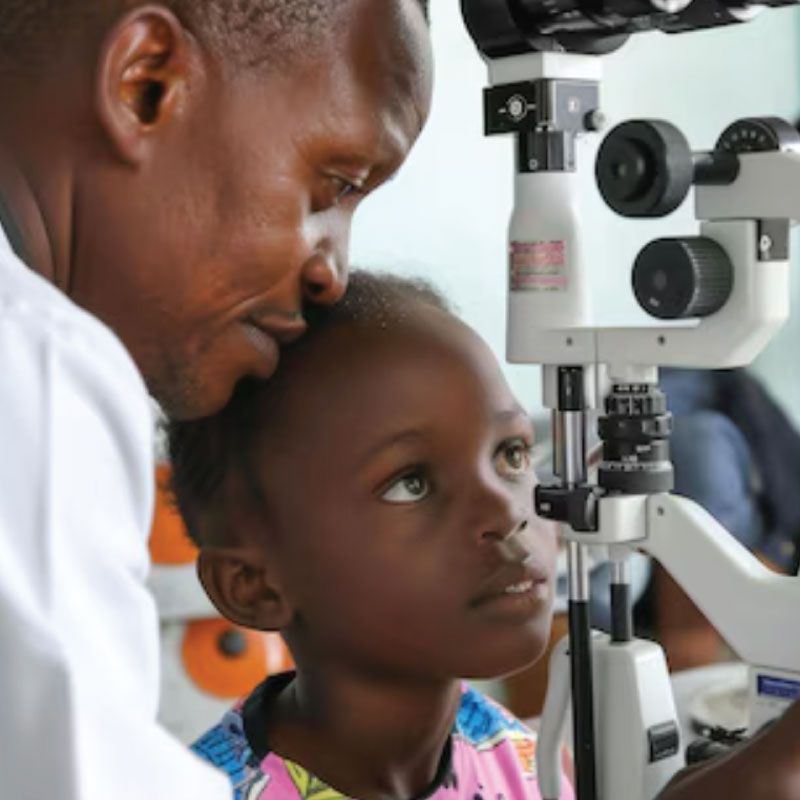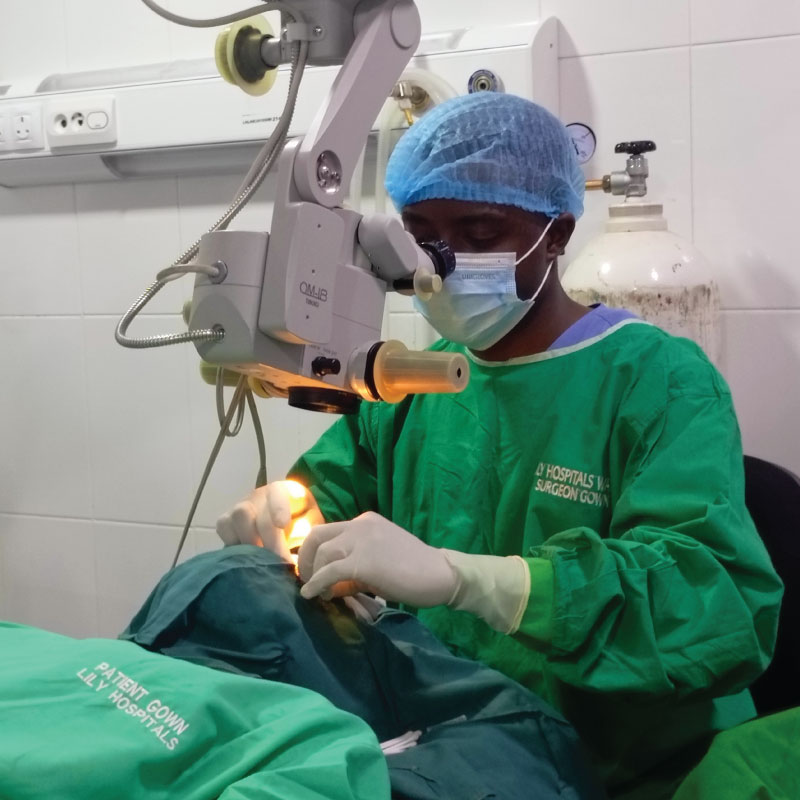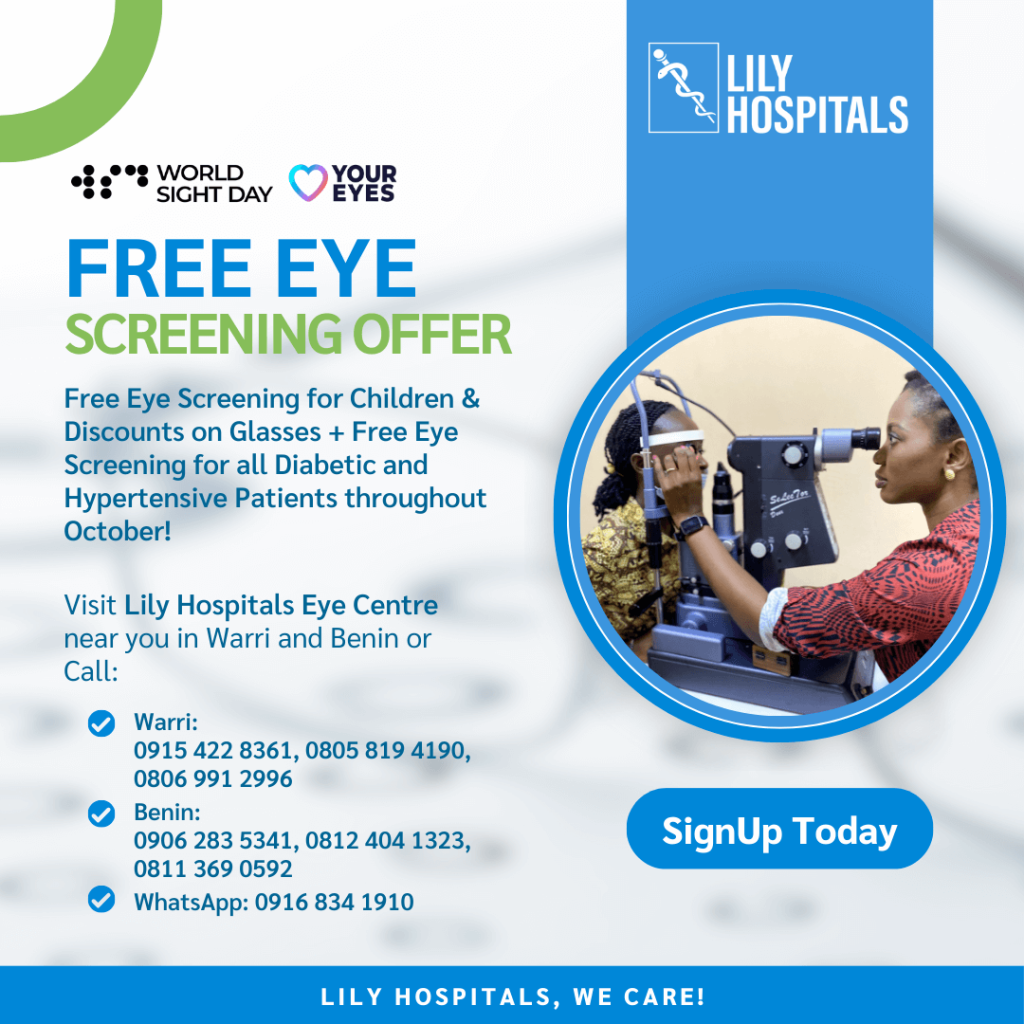
Early Detection of Eye Problems in Children is crucial as childhood vision health is foundational to learning and exploring the world. Yet, millions of children suffer from undiagnosed eye issues that impact development and quality of life. Observed annually, World Sight Day raises global awareness of the 2.2 billion people with vision impairment, emphasizing that early detection and prevention are essential, particularly for children. In regions like Nigeria and sub-Saharan Africa, where preventable causes of blindness prevail, identifying early signs is critical for lifelong eye health.
Causes of Childhood Blindness and Visual Impairment
Vision impairment in children may stem from various treatable or preventable causes:
- Corneal Scarring: Often caused by Vitamin A deficiency, infections, or injury.
- Retinopathy of Prematurity: Common in preterm infants, affecting retinal blood vessel growth.
- Cataracts and Refractive Errors: Both are frequent yet addressable causes that may require early intervention.
- Genetic Factors and Low Vision: Genetic issues or developmental irregularities may lead to low vision or blindness, necessitating specialized care.
Types of Eye Problems in Children
Understanding common eye issues is essential for parents and caregivers. Here are several prevalent conditions:
- Amblyopia (Lazy Eye): Often goes unnoticed, as one eye compensates for the other. Early diagnosis can prevent long-term vision loss.
- Strabismus (Eye Misalignment): Affects depth perception and can lead to double vision.
- Refractive Errors (Myopia, Hyperopia, Astigmatism): Common in school-aged children, often identified through complaints of blurry vision.
- Conjunctivitis (Pink Eye): Easily spread among children, causing redness, irritation, and tearing.
Symptoms and Signs of Common Eye Issues in Children
Being alert to signs of vision problems can lead to timely treatment and a better prognosis. Here are key symptoms parents and guardians should watch for:
- Vision Issues: Difficulty seeing the board at school, avoiding close activities, or frequent complaints of blurry vision.
- Physical Symptoms: Headaches, eye redness, or excessive tearing.
- Visible Signs: Misaligned pupils, eyelid drooping, white spots in the pupil, or eye protrusion.
- Behavioral Cues: Tilting the head to see, squinting, or loss of interest in visually demanding tasks.
Eye Problems in Children: Key Red Flags for Parents
Parents must be vigilant about certain behaviours that can indicate eye health issues, including:
- Difficulty reading or focusing on near objects.
- Frequent blinking, squinting, or covering one eye.
- Trouble differentiating colours or shades.
- Eye misalignment or drifting pupils.
- Persistent eye discomfort, like itching, pain, or stickiness.
Treatment Options for Childhood Eye Conditions
A tailored approach to treatment ensures that children receive the most effective care for their specific condition. Common treatment options include:

- Comprehensive Eye Examination: Conducted by a pediatric ophthalmologist to assess overall eye health.
- Glasses and Refraction: To correct refractive errors and improve clarity of vision.
- Eye Drops and Medications are often used to manage inflammation or other symptoms.
- Laser and Microinvasive Surgery: Reserved for severe cases where other treatments fail, these minimally invasive surgeries address structural issues in the eyes.

Read Also: How Screen Time Affects Children
Practices to Avoid in Treating Eye Problems
Avoid harmful self-treatments or unproven remedies that can exacerbate eye issues:
- Avoid Self-Medication: Only use prescribed treatments; self-treatment, especially with substances like breastmilk, can be dangerous.
- Nil Steroid or NSAID Eye Drops Without Doctor’s Advice: Only professionals should prescribe these to prevent potential harm.
Digital Wellbeing for Eye Health
With increased screen exposure, especially among young children, protecting digital well-being is vital:
- 20-20-20 Rule: After 20 minutes of screen use, look 20 feet away for at least 20 seconds.
- Screen Settings: Use blue light filters, particularly in the evening.
- Healthy Habits: Encourage blinking frequently, maintaining hydration, and keeping proper posture during screen use.
Digital Wellbeing for Children
Managing screen time is essential for children’s eye health. Recommendations include:
- Limit Screen Time Based on Age: No screen time for children under two, one hour for ages 2-7, and a maximum of two hours for those aged 7-17.
- Nighttime Screen Restrictions: Avoid screens at least one hour before bedtime to prevent sleep disruption.
- Protective Eyewear: Blue light-blocking glasses can help reduce eye strain.
Prevention Strategies for Childhood Eye Health
Preventive steps can dramatically reduce the prevalence of childhood vision issues:
- Regular Eye Exams: Early screenings can catch developing issues before they worsen.
- Nutrition: Vitamin A and other essential nutrients can support eye health.
- Vaccinations: Immunizations against diseases like measles and meningitis can prevent certain eye conditions.
- Primary Health Care Integration: Access to quality maternal and child health services, including primary eye care, can aid in preventing early childhood blindness.
Read Also: What Is Glaucoma?
Conclusion
Healthy vision is essential for children to fully experience and learn from their surroundings, enabling them to thrive in all aspects of life. Detecting eye issues early is crucial for effective treatment and prevention, helping children grow into well-rounded individuals ready to explore, learn, and lead. Prioritize regular eye check-ups and adopt these preventative practices to safeguard your child’s eye health.
October Special at Lily Eye Centre
Throughout October, we’re committed to helping you see a brighter future! Visit any of our clinics in Warri, Benin, and Ughelli and take advantage of these exclusive offers:
👉 Free Eye Screening for Children
👉 Free Eye Screening for Diabetic & Hypertensive Patients
👉 Special Discounts on Selected Glasses for Children
👉 Heavily Discounted Eye surgeries
Don’t miss this opportunity to prioritize your eye health and that of your loved ones. Visit us today at our centre in Warri, Benin and Ughelli or say hello via WhatsApp: 09168341910

Eye Issues in Children – Frequently Asked Questions
What are common signs of eye problems in children?
Symptoms include difficulty reading, eye misalignment, redness, and frequent blinking or squinting.
How much screen time is appropriate for children?
Recommendations vary by age, with no screen time for children under two and a maximum of two hours for those aged 7-17.
Can Screen time harm children’s eyesight permanently?
Extended screen use may cause strain and discomfort, but limiting exposure and following protective practices can minimize risks.
Are there natural ways to prevent eye issues in children?
Yes, a balanced diet rich in Vitamin A, regular eye check-ups, and outdoor play can all support eye health.
What food supports eye health in children?
Vitamin A-rich foods like carrots, sweet potatoes, and leafy greens promote eye health.
What treatments are available for childhood eye issues?
Options include eye exams, prescription glasses, medications, and, in severe cases, surgery.
When should I start taking my child for regular eye exams?
Start annual eye exams around age three or sooner if any symptoms arise.


